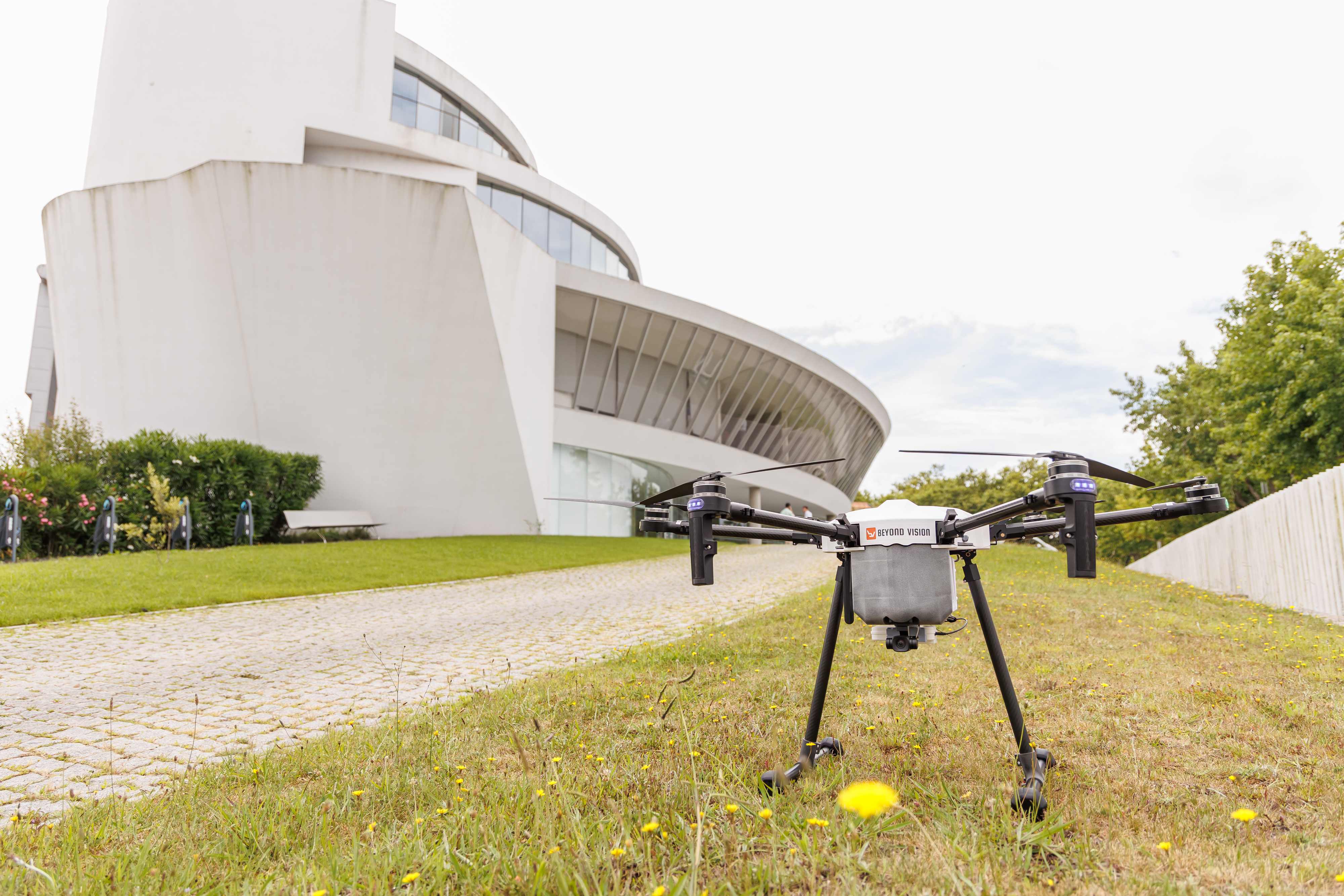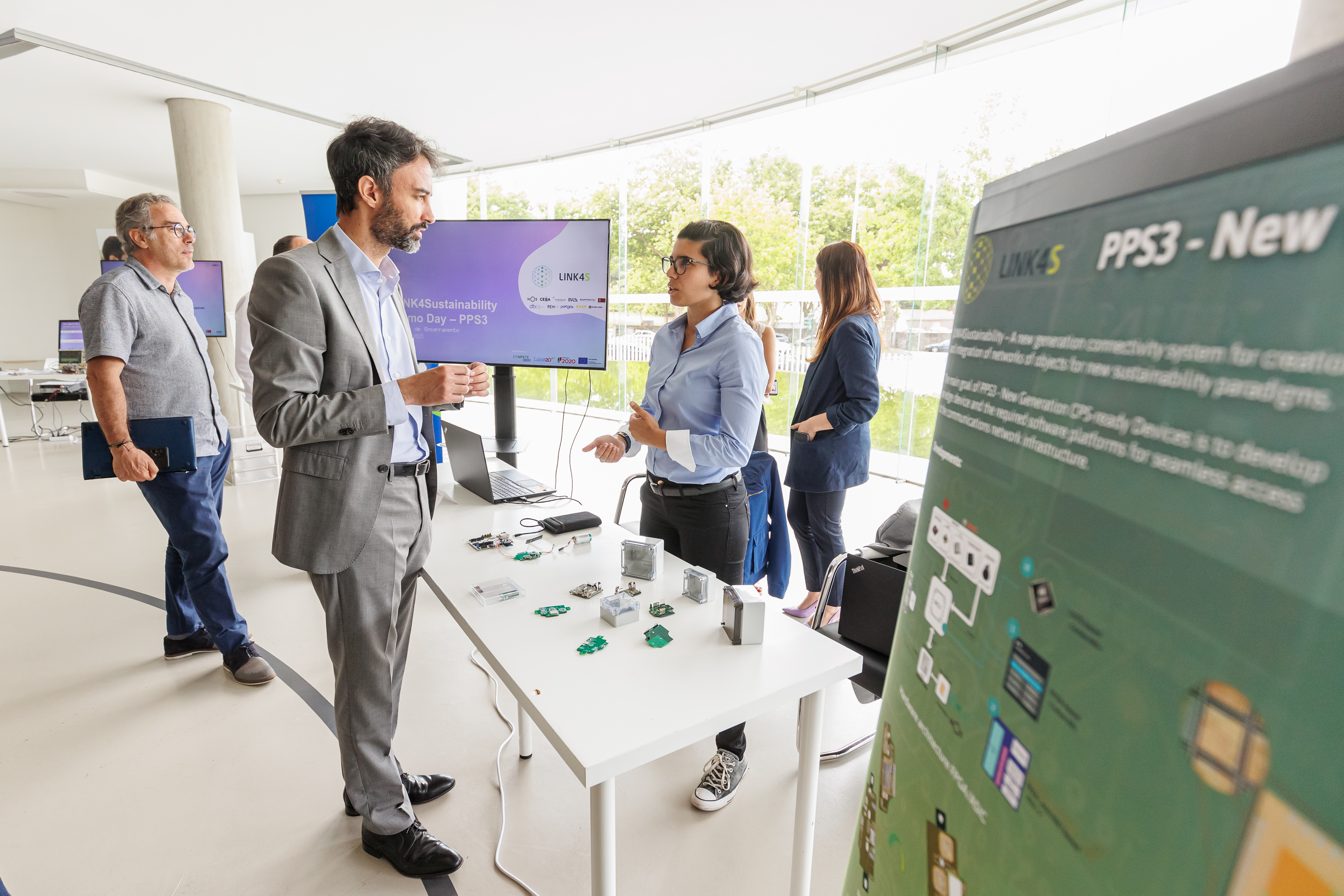LINK4S presents new smart solutions to help decarbonise cities
- Sensor-enabled energy solutions help predict risk of fires, gas leaks, and cable corrosion
- Sustainable transport and logistics networks monitor environmental quality
Shared bicycles and sensor-enabled drones that deliver packages and measure the city’s environmental quality, critical infrastructure capable of predicting the risk of natural disasters, and smart and connected platforms based on IoT and 5G-ready technologies are some of the smart solutions developed under the (Link4S)ustainability project to help cities become more sustainable and decarbonised.
The project’s main deliverables were presented by the Link4S consortium, led by NOS, in partnership with Mobileum, Exatronic, REN, Portgás, Wyze, Beyond Vision, CEiiA, DTx – Digital Transformation CoLAB, INL, and University of Minho. By implementing sustainable digital solutions in the mobility and energy ecosystems, the project yields real benefits for people and cities, enabling them to enhance quality of life and minimize environmental impact.
Manuel Ramalho Eanes, director at NOS, leader of the Link4S consortium, emphasised “the European Union has committed to leading global climate action through a competitive CO2-neutral European economy by 2050, with sustainability, climate, decarbonisation, and resource efficiency being the driving forces in achieving this long-term vision. LINK4S contributes to the achievement of this structuring goal that affects all of society, through the development of smart platforms that foster its connectivity capabilities for a path that is more sustainable and provides a higher quality of life.”
André Matos, CEO of DTx – Digital Transformation CoLAB, one of the co-promoters, highlighted “the clarity and relevance of the use cases of the project, which, through collaborative research between Academia and the business partners that make up the consortium, enabled DTx CoLAB’s contribution in the creation of innovative solutions (cyber-physical systems) and the catalysis of scientific knowledge into value for business and society.”
Energy Ecosystem
In the energy area, new functionalities and monitoring features have been developed to improve risk management and early identification of symptoms that can lead to failures.
Within this scope, three pilot projects have been developed:
- very-high voltage underground cable joint bay monitoring – monitored variables such as water ingress, access cover integrity, corrosion, and temperature in underground cable joints;
- power distribution towers – measured acceleration (tower vibration) and wind speed patterns, to determine the tower’s structural degradation, as well as environmental information such as temperature, humidity, and gases, seeking to provide additional information that may be relevant in preventing wildfires;
- intrusion and risk assessment in capillary natural gas assets – sought to remotely monitor and detect CH4 leaks, one of the major concerns of a natural gas distribution system, as well as unauthorised access to the natural gas supply network.
Mobility Ecosystem
In the mobility field, a new shared and sustainable mobility model has been developed, enabling the assessment of a city’s sustainability patterns through temperature, humidity, noise, and air pollution.
This way, it is possible to combine a sustainable network model for transport (through electric bicycles) and urban logistics (via drones) with a key network of sensors to capture crucial information to monitor and subsequently improve the quality of the urban environment.
Two pilot projects have been developed in this area. In the first project – electric bicycle sharing ecosystem – the vehicles were coupled with sensors capable of measuring both traffic flow and atmospheric quality (noise and air quality).
The data collected is sent in real time to the platform and is stored and processed using innovative algorithms that support the decision-making of the involved agents, citizens, municipal managers, mobility operator, and others.
This mobility management and sensing platform was also coupled with a carbon reward component, through the AYR platform, which calculates the CO2 emissions avoided using sustainable mobility and rewards citizens with tokens that can be used to acquire sustainable services and products.
In the second pilot project – drones – new air-based urban logistics services and the use of drones to monitor the city’s environment were tested, enabling the analysis of air quality/noise metrics and the monitoring of traffic and other aspects related to the city’s protection, management, and safety, namely fire protection, cartography, and optimisation of navigation routes in the urban environment.
The project is supported by Agência Nacional de Inovação (ANI) [Portuguese National Innovation Agency], through I&D Empresarial – Projetos Mobilizadores [Corporate R&D – Mobiliser Programmes], and is co-financed by COMPETE2020, Lisboa2020, PORTUGAL2020, through the European Regional Development Fund (ERDF).
Learn more about this project here.
;





